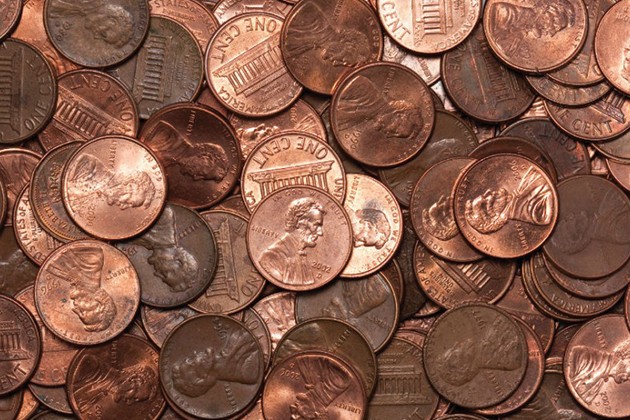What Cleans an Old Penny?
By: Highlights Editorial
The average U.S. coin is in circulation for 30 years, so it’s no surprise that coins get dirty! Pennies, with their copper exterior, often look especially tarnished. Try this experiment to see if soap or vinegar does a better job at making pennies shine again.
What You'll Need
What to Do
-
Guess which liquid will make a penny shine.
-
Set one penny aside. Put each of the other two pennies into its own paper cup.
-
In one cup, pour enough vinegar to cover the penny.
-
In the other cup, pour enough liquid soap to cover the penny.
-
Wait at least ten minutes.
-
Remove the pennies, rinse them in water and rub them with a paper towel.
-
Compare all three pennies.
How It Works
The vinegar made its penny shiny. Pennies become dull over time as copper on the surface reacts with oxygen from the air. The two elements combine to form dark chemicals called copper oxides. The acetic acid in vinegar dissolves these chemicals and leaves the copper surface of the penny looking shiny. Soap can clean lots of things, but it can’t dissolve copper oxides.
Extend the Fun
Younger kids: Do the experiment again with more pennies. With your child, collect 10 pennies and count them one at a time. Before the pennies go in the vinegar, talk about what they look like. Think about color, shape and size. Repeat the experiment and then talk again after the pennies are shiny and rinsed. What is different about the pennies? What is the same? Finish up by counting the pennies again and adding them to your child’s piggy bank.
Older kids: In this experiment, you left the penny in the vinegar for 10 minutes. What do you think would happen if you left it in for 30 seconds? What if you left it in for an hour? What would happen if you put only part of the penny in the vinegar? Make a guess and test these ideas with other pennies. If you run out of vinegar, you can also use other acidic liquids, such as lemon juice or pickle juice. See how they compare!









